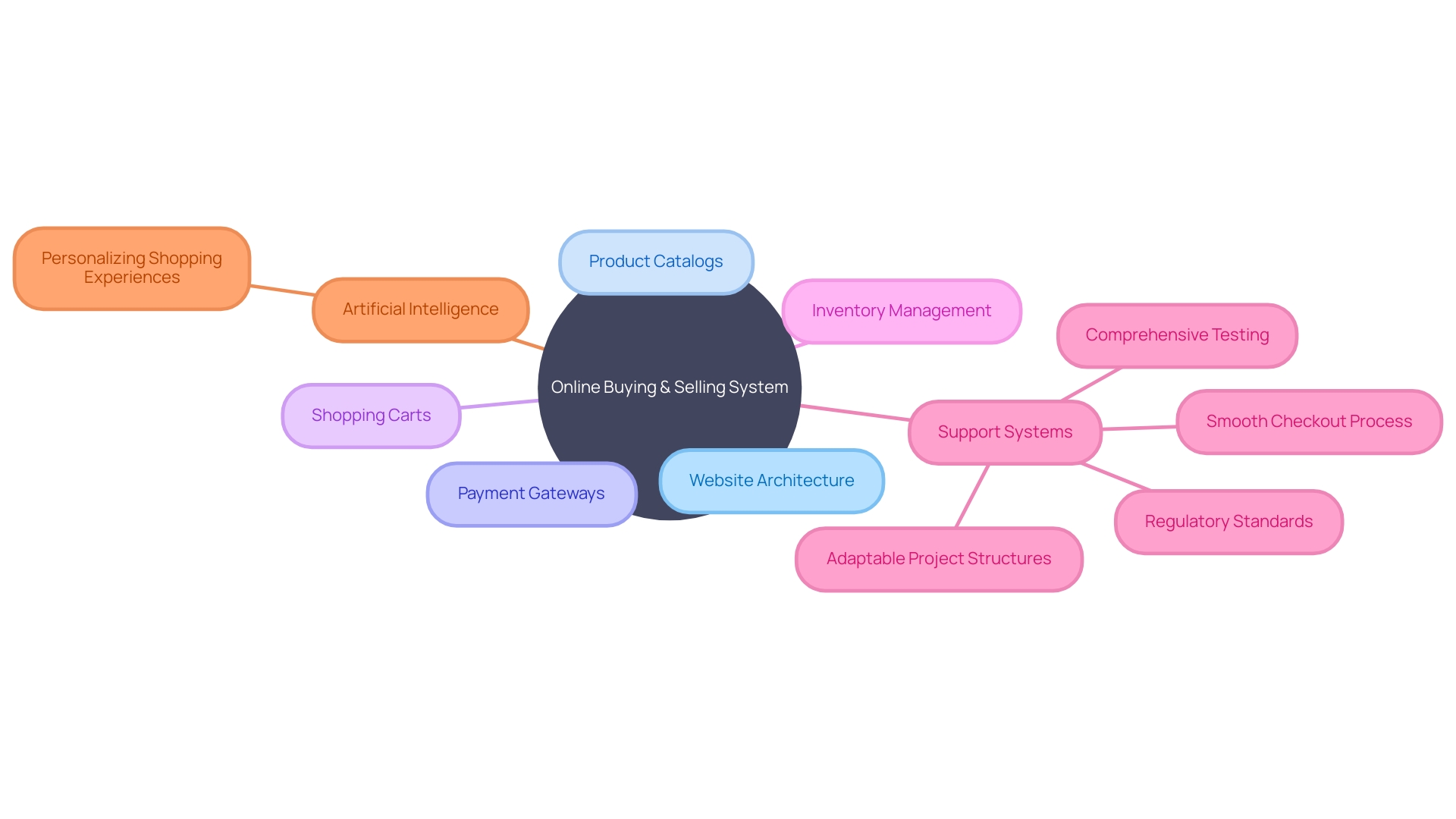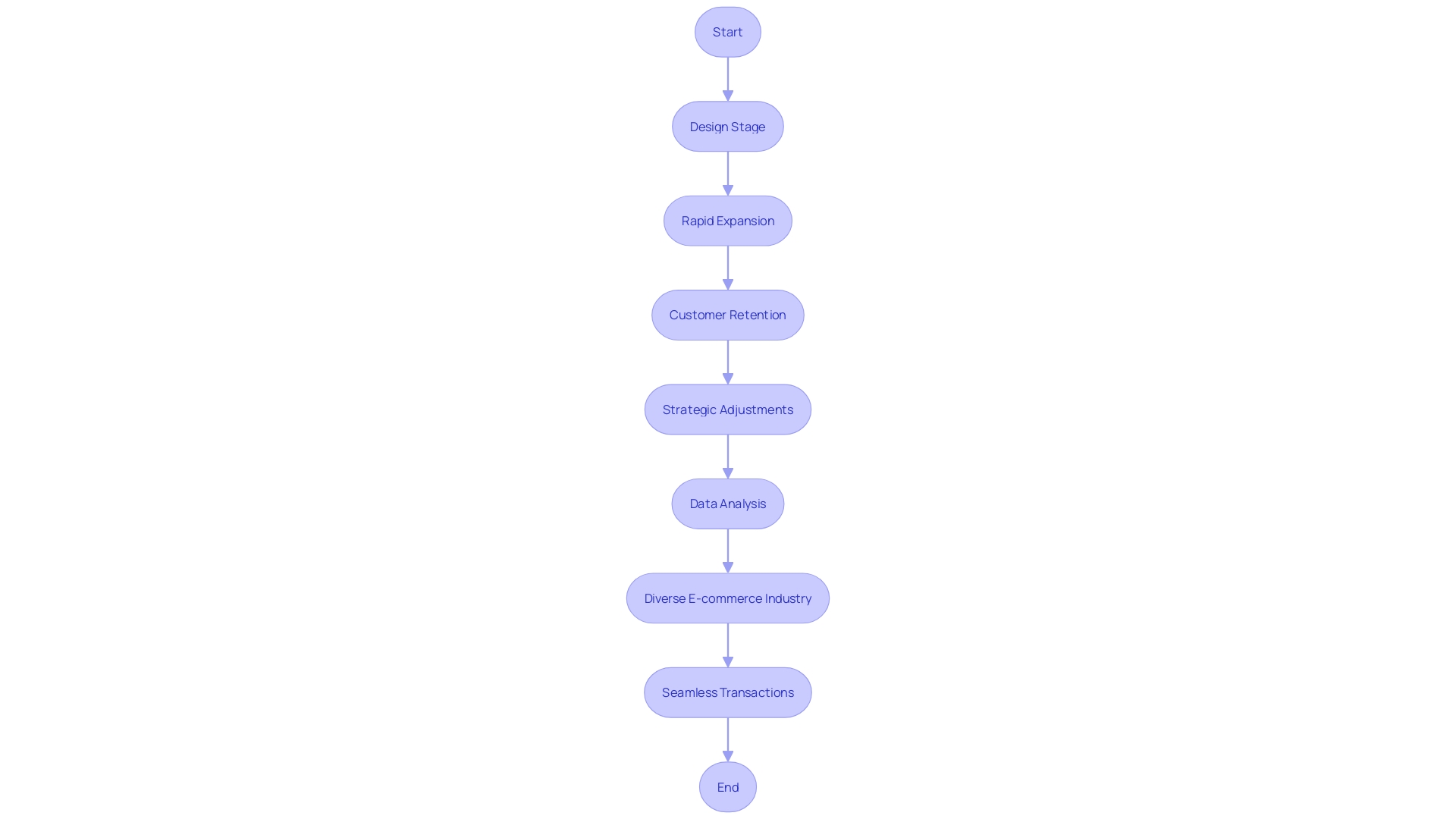Introduction
The world of e-commerce is a dynamic and rapidly evolving landscape, presenting endless opportunities for businesses to grow and adapt to the changing behaviors and preferences of online shoppers. From the initial stages of research and planning to the final stages of testing, deployment, and marketing, each phase plays a crucial role in the success of an e-commerce platform. In this article, we will explore the key stages of the e-commerce lifecycle and provide valuable insights and recommendations to help businesses thrive in this competitive industry.
So, whether you're just starting out or looking to enhance your existing e-commerce platform, join us as we delve into the intricacies of building and maintaining a successful online business.
Stage 1: Research and Planning
Starting an online business project requires careful research and strategic planning to ensure its success. A thorough comprehension of the market is essential, encompassing an investigation of current trends such as the increasing dependence on mobile devices for shopping and the expansion of online business into different sectors including retail, travel, and hospitality. Identifying the target audience is not just about demographics but also understanding their behaviors and preferences, which are increasingly shaped by innovations like artificial intelligence that personalizes the shopping experience.
A deep dive into competitor analysis is also essential, examining their traffic and SEO strategies, as illustrated by a case study where direct competitors' traffic was analyzed to shape content creation for SEO improvements. This strategy is not just about imitating what others do but also about discovering chances to differentiate oneself in the online business landscape that encompasses 14 unique markets, from beverages to household essentials.
Establishing distinct objectives and targets for the online trading platform necessitates harmonizing corporate tactics with client anticipations and market possibilities. This involves utilizing the most recent trends and technologies in online business to provide a smooth user experience and groundbreaking services that connect with clients. As industry experts emphasize, the ever-changing nature of online business today requires a forward-thinking approach to stay ahead. For instance, the introduction of Amazon's Second Chance Store in London demonstrates the innovative ways businesses are adapting to consumer needs and sustainability concerns.
To sum up, this initial phase is not only about establishing the foundation but also about creating a distinctive story and efficient system for the online business that encapsulates the brand's core and fulfills customer needs, paving the way for triumph in a rapidly changing digital market.
Stage 2: Platform Selection and Website Design
Finding a suitable e-commerce system is a crucial step for the success of your online business. This critical phase demands meticulous evaluation of platforms, weighing aspects like scalability, the potential for customization, and the ease of integration with other tools. In the case of Vendredi Society, they approached this task by setting a clear value proposition that highlighted their business model's features and benefits. They treated their website as a vital component of their branding, pouring creative energy into every facet from 3D design to motion graphics and copywriting to ensure it resonated with their vision and culture.
Similarly, when it comes to actualizing the website, the aim is to craft a space that is not only user-friendly and visually stunning but also encapsulates your brand's essence. Draw motivation from Dublin's revolutionary checkout-free store powered by Zippin technology, which has reshaped the shopping encounter at Dublin Airport by combining convenience with cutting-edge tech. Similarly, your website should be more than just a display; it should serve as the foundation of your brand strategy, providing engaging encounters that are in line with long-term objectives.
As you explore online business solutions like Shopify, which offers a user-friendly interface and customizable themes without the need for extensive coding or design expertise, consider how these platforms can serve your unique business needs and facilitate your growth. Keep in mind, the online business industry is changing quickly, with AI and other technologies generating more customized shopping encounters. By keeping up with these trends and utilizing them effectively, your online store can flourish in the dynamic online shopping environment.
Stage 3: Development and Construction
The development of an online buying and selling system is a crucial stage where the envisioned purchasing journey becomes a reality. Meticulous construction of the website's architecture sets the stage for introducing product catalogs, seamlessly integrating payment gateways, and weaving in essential features that are the backbone of online retail such as shopping carts, inventory management, and support systems. These elements are not merely functional; they are the keystones of user engagement and transactional efficiency.
A customized website, created by experienced online business developers, raises your presence above the competition, guaranteeing it not only fulfills but predicts customer requirements. One must not underestimate the significance of a smooth checkout process—often the deciding factor between a sale and an abandoned cart. It's a complex but critical component, where simplicity and reliability go hand in hand to provide a frictionless checkout experience.
Innovative case studies reveal the importance of adaptable project structures. For instance, one client's need for a labeling system to manage document flow across different editorial teams led to the development of a sophisticated label system. This method allowed shared access while preserving state-specific control, demonstrating the adaptability and versatility that online business platforms can accomplish.
Additionally, the implementation of fresh phases like Regulator, Staging, and Integration into the content life cycle highlights the importance of comprehensive testing and adherence to regulatory standards, which are crucial for preserving the integrity and dependability of online business activities.
Current trends, like the opening of checkout-free stores utilizing Zippin technology at Dublin Airport, exemplify the dynamic nature of online shopping and the emergence of innovative solutions to enhance the shopping experience. These developments not only cater to convenience but also to the evolving expectations of consumers who demand effortless and rapid service.
To understand the dynamics of online business, one must pay attention to the transformative impact of Artificial Intelligence, which personalizes shopping experiences, making them more engaging for customers. It is evident that the online retail industry is rapidly evolving, offering limitless opportunities for businesses to expand and adjust to the changing behaviors and preferences of online shoppers.

Stage 4: Testing and Deployment
Before the impressive introduction of an online selling system, thorough examination is an essential measure to ensure its functionality and safety. This phase is dedicated to evaluating multiple facets including the swiftness of website response, load times, seamless payment transactions, and robust data protection mechanisms. By setting clear objectives, like enhancing load speeds or bolstering the system to withstand high traffic during sales events, the testing ensures the site's preparedness for any scenario. Selecting the appropriate tools, such as LoadRunner, JMeter, or WebLOAD, is crucial for a comprehensive testing regime that aligns with technical specifications and budget constraints. The test environment mirrors the live production setting to provide a realistic assessment. Performance testing becomes a crucial element for e-commerce websites, aiming to provide a seamless, fast browsing encounter, and proactively detecting any potential user interface interruptions. Learning from the extensive testing measures employed by industry giants like Zalando, especially during peak periods like Cyber Week, can offer valuable insights into maintaining system stability amid complexity. The implementation stage only begins once the evaluation stage confirms the readiness of the system, guaranteeing that individuals have a smooth shopping experience from the beginning.
Stage 5: Launch and Marketing
When an e-commerce system is established, the attention turns to marketing techniques that will generate traffic and sales. The integration of search engine optimization (SEO) is crucial for enhancing the platform's online visibility, enabling potential clients to locate the site through search engines. Moreover, the influence of social media marketing should not be underestimated, as it provides a platform to connect with clients and generate captivating content that strikes a chord with the target audience. Email marketing remains a staple for personalized communication, helping to build relationships and encourage repeat purchases. Moreover, generating valuable content can attract and keep clients by giving them with helpful information and establishing the brand as an authority in its niche. These efforts must be part of a cohesive marketing plan that aligns with the brand's goals and resonates with its unique audience, drawing inspiration from successful online retail stories like Gothrider Coffee, which has leveraged its unique brand identity to carve out a niche in the competitive market. As online shopping continues to develop, it is vital for platforms to be innovative and adjust their marketing approaches to sustain expansion and consumer allegiance.
E-commerce Lifecycle Stages
Grasping the intricate progression of an e-commerce business is crucial for lasting success. The lifecycle unfolds in several distinct stages:
- The first stage is characterized by rapid expansion as you focus on acquisition, brand building, and scaling your operations efficiently.
- As growth plateaus, the emphasis transitions to retaining customers, enhancing their shopping experience, and refining operational effectiveness.
- To reignite growth, you may need to replatform your e-commerce system or introduce strategic adjustments, catering to emerging market trends to maintain a competitive edge.
The design stage, pivotal to the product approach, involves careful analysis of user needs to pinpoint and address their most significant challenges. By understanding where data is required and its intended use, you can better serve various consumption points.
Furthermore, ecommerce extends beyond online storesâit includes any commercial transaction conducted electronically, including mobile apps, social networks, and online marketplaces. The advent of ecommerce dates back to the 1970s, and today it's a diverse and rapidly evolving industry, touching everything from retail to travel and hospitality.
Recent industry movements, such as Tiffany Haddish's mobile marketing tour and Aliexpress's promise of expedited cross-border delivery, exemplify the dynamism of the sector. Amazon's innovative Second Chance Store in London and Daraz's engaging livestream events across South Asia further demonstrate the resilience and creativity prevalent in today's ecommerce landscape.
Ecommerce operations hinge on the seamless execution of transactions, which include various payment methods and are facilitated across multiple devices and platforms. The checkout process, a cornerstone of the online shopping experience, must be frictionless to ensure customer satisfaction.
The current ecommerce market spans 14 diverse sectors, from beverages and food to tobacco products and household essentials, reflecting its extensive reach and potential for growth. As businesses continue to leverage ecommerce for global reach, sales growth, and innovation, understanding and navigating the ecommerce lifecycle becomes increasingly essential.

Conclusion
In conclusion, building and maintaining a successful e-commerce platform requires careful research, planning, and adaptation to the evolving landscape of online shopping. The first stage, research and planning, involves understanding market trends, identifying target audiences, and setting clear goals aligned with customer expectations and technological advancements. The second stage focuses on platform selection and website design, emphasizing the importance of finding the right e-commerce platform that offers scalability, customization, and a user-friendly interface.
The third stage, development and construction, highlights the significance of creating a tailored website that anticipates customer needs, with a particular emphasis on a smooth checkout process and compliance with regulatory standards. The fourth stage, testing and deployment, emphasizes the importance of meticulous testing to ensure operational efficiency and security before the platform is launched. Finally, the fifth stage, launch and marketing, emphasizes the incorporation of SEO, social media marketing, email marketing, and valuable content creation to drive traffic and sales.
Understanding the e-commerce lifecycle is crucial for lasting success, with distinct stages that involve swift growth, customer retention, and strategic adjustments to maintain a competitive edge. The dynamic nature of the e-commerce industry is exemplified by innovative solutions and creative approaches adopted by businesses, such as checkout-free stores and personalized shopping experiences powered by artificial intelligence. The extensive reach of e-commerce encompasses various sectors and platforms, underscoring its potential for growth and global reach.
By navigating the e-commerce lifecycle and staying abreast of industry trends, businesses can thrive in the competitive online marketplace.





